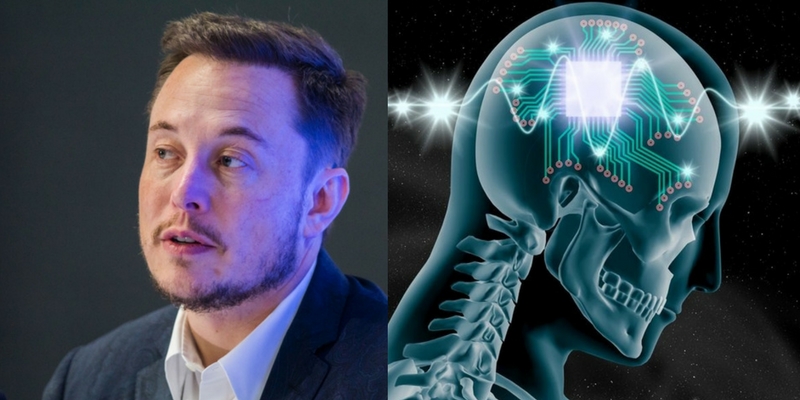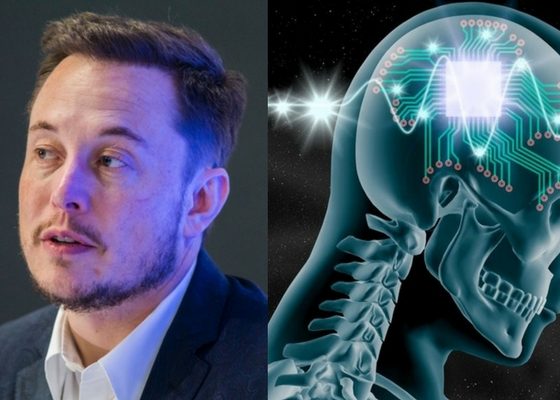

News
Elon Musk’s Neuralink files permit to build biological research lab
Elon Musk’s neurotechnology startup Neuralink filed for permits to build an in-house machine shop and a biological testing laboratory for its facility in San Francisco last year.
The documentation on the company’s 2017 permits was retrieved by Gizmodo, which was able to access Neuralink’s public records. An excerpt of a letter submitted by Neuralink executive Jared Birchall on February 2017 to the city’s planning department gives some clues about the company’s plans for the facility’s proposed machine shop and animal testing lab.
“The tenant intends to use the 2nd floor as an interdisciplinary workroom for electrical, chemical, mechanical & materials engineering and computer science development, with a small machine shop attached, to modify prefabricated small bio-mechanical devices as well as perform 3D printing and CNC (Computer Numerical Control) milling. The machine shop is an accessory use to the workroom.
“The tenant intends to use the 3rd floor as a biological research laboratory for neurological interface testing and development. Ancillary to this use, the tenant will require a clean room for microfabricated device integration, a small operating room for in vivo testing, and a small room to house rodents. This will follow the CNC/NIH Animal Biosafety Laboratory Level 1. The use of rodents is exempt from the Animal Welfare Act. The clean room, operating room, and rodent housing uses are accessory to the laboratory use.”

Neuralink’s approved permit to keep and use laboratory animals. [Credit: Gizmodo]
Neuralink also filed for a permit from the California Department of Public Health in April 2017, directly referencing the utilization of laboratory animals. The document was submitted to the CDPH, which subsequently approved the permit in May 2017. According to a California DPH spokesperson who spoke to the publication, however, city officials have not inspected Neuralink’s facility after the permit was approved. The DPH spokesperson further added that Neuralink’s permit would expire on April 2018, but so far, the neurotech company has not filed for renewal.
Ultimately, Neuralink’s permits for its biological testing laboratory indicates, at least to some extent, that the company is making progress on its projects. In a statement to Gizmodo, Alik Widge, a psychiatrist-engineer at Massachusetts General Hospital involved in electrical and magnetic brain stimulation research, stated that testing on rodents is a valuable and inherent part of the research development process, especially for companies with goals as ambitious as Neuralink.
“When you think about the body, we’re made mostly of salt water. You can see what a year or two of that will do to a car. Now imagine what it will do to a high-precision medical device, especially one that’s putting out electric signals. The role of animal testing is to show that the risk of any of that happening is incredibly low,” Widge said.
Now more than a year old, the specifics of Neuralink’s projects are still a mystery. What is known, however, is that the startup is aimed at developing neural lace technologies, which are designed to foster links between the human brain and computers. As we noted in a previous report, these linkages, later dubbed as “wizard hats for the brain,” will likely be possible through the use of microelectromechanical systems (MEMS). MEMS are comprised of incredibly small robots that are biocompatible, which means that they would, by design, be able to proliferate throughout the human body.

Elon Musk
Elon Musk’s X will start using a Tesla-like software update strategy
The initiative seems designed to accelerate updates to the social media platform, while maintaining maximum transparency.

Elon Musk’s social media platform X will adopt a Tesla-esque approach to software updates for its algorithm.
The initiative seems designed to accelerate updates to the social media platform, while maintaining maximum transparency.
X’s updates to its updates
As per Musk in a post on X, the social media company will be making a new algorithm to determine what organic and advertising posts are recommended to users. These updates would then be repeated every four weeks.
“We will make the new 𝕏 algorithm, including all code used to determine what organic and advertising posts are recommended to users, open source in 7 days. This will be repeated every 4 weeks, with comprehensive developer notes, to help you understand what changed,” Musk wrote in his post.
The initiative somewhat mirrors Tesla’s over-the-air update model, where vehicle software is regularly refined and pushed to users with detailed release notes. This should allow users to better understand the details of X’s every update and foster a healthy feedback loop for the social media platform.
xAI and X
X, formerly Twitter, has been acquired by Elon Musk’s artificial intelligence startup, xAI last year. Since then, xAI has seen a rapid rise in valuation. Following the company’s the company’s upsized $20 billion Series E funding round, estimates now suggest that xAI is worth tens about $230 to $235 billion. That’s several times larger than Tesla when Elon Musk received his controversial 2018 CEO Performance Award.
As per xAI, the Series E funding round attracted a diverse group of investors, including Valor Equity Partners, Stepstone Group, Fidelity Management & Research Company, Qatar Investment Authority, MGX, and Baron Capital Group, among others. Strategic partners NVIDIA and Cisco Investments also continued support for building the world’s largest GPU clusters.
News
Tesla FSD Supervised wins MotorTrend’s Best Driver Assistance Award
The decision marks a notable reversal for the publication from prior years, with judges citing major real-world improvements that pushed Tesla’s latest FSD software ahead of every competing ADAS system.

Tesla’s Full Self-Driving (Supervised) system has been named the best driver-assistance technology on the market, earning top honors at the 2026 MotorTrend Best Tech Awards.
The decision marks a notable reversal for the publication from prior years, with judges citing major real-world improvements that pushed Tesla’s latest FSD software ahead of every competing ADAS system. And it wasn’t even close.
MotorTrend reverses course
MotorTrend awarded Tesla FSD (Supervised) its 2026 Best Tech Driver Assistance title after extensive testing of the latest v14 software. The publication acknowledged that it had previously criticized earlier versions of FSD for erratic behavior and near-miss incidents, ultimately favoring rivals such as GM’s Super Cruise in earlier evaluations.
According to MotorTrend, the newest iteration of FSD resolved many of those shortcomings. Testers said v14 showed far smoother behavior in complex urban scenarios, including unprotected left turns, traffic circles, emergency vehicles, and dense city streets. While the system still requires constant driver supervision, judges concluded that no other advanced driver-assistance system currently matches its breadth of capability.
Unlike rival systems that rely on combinations of cameras, radar, lidar, and mapped highways, Tesla’s FSD operates using a camera-only approach and is capable of driving on city streets, rural roads, and freeways. MotorTrend stated that pure utility, the ability to handle nearly all road types, ultimately separated FSD from competitors like Ford BlueCruise, GM Super Cruise, and BMW’s Highway Assistant.
High cost and high capability
MotorTrend also addressed FSD’s pricing, which remains significantly higher than rival systems. Tesla currently charges $8,000 for a one-time purchase or $99 per month for a subscription, compared with far lower upfront and subscription costs from other automakers. The publication noted that the premium is justified given FSD’s unmatched scope and continuous software evolution.
Safety remained a central focus of the evaluation. While testers reported collision-free operation over thousands of miles, they noted ongoing concerns around FSD’s configurable driving modes, including options that allow aggressive driving and speeds beyond posted limits. MotorTrend emphasized that, like all Level 2 systems, FSD still depends on a fully attentive human driver at all times.
Despite those caveats, the publication concluded that Tesla’s rapid software progress fundamentally reshaped the competitive landscape. For drivers seeking the most capable hands-on driver-assistance system available today, MotorTrend concluded Tesla FSD (Supervised) now stands alone at the top.
News
Elon Musk’s Grokipedia surges to 5.6M articles, almost 79% of English Wikipedia
The explosive growth marks a major milestone for the AI-powered online encyclopedia, which was launched by Elon Musk’s xAI just months ago.

Elon Musk’s Grokipedia has grown to an impressive 5,615,201 articles as of today, closing in on 79% of the English Wikipedia’s current total of 7,119,376 articles.
The explosive growth marks a major milestone for the AI-powered online encyclopedia, which was launched by Elon Musk’s xAI just months ago. Needless to say, it would only be a matter of time before Grokipedia exceeds English Wikipedia in sheer volume.
Grokipedia’s rapid growth
xAI’s vision for Grokipedia emphasizes neutrality, while Grok’s reasoning capabilities allow for fast drafting and fact-checking. When Elon Musk announced the initiative in late September 2025, he noted that Grokipedia would be an improvement to Wikipedia because it would be designed to avoid bias.
At the time, Musk noted that Grokipedia “is a necessary step towards the xAI goal of understanding the Universe.”
Grokipedia was launched in late October, and while xAI was careful to list it only as Version 0.1 at the time, the online encyclopedia immediately earned praise. Wikipedia co-founder Larry Sanger highlighted the project’s innovative approach, noting how it leverages AI to fill knowledge gaps and enable rapid updates. Netizens also observed how Grokipedia tends to present articles in a more objective manner compared to Wikipedia, which is edited by humans.
Elon Musk’s ambitious plans
With 5,615,201 total articles, Grokipedia has now grown to almost 79% of English Wikipedia’s article base. This is incredibly quick, though Grokipedia remains text-only for now. xAI, for its part, has now updated the online encyclopedia’s iteration to v0.2.
Elon Musk has shared bold ideas for Grokipedia, including sending a record of the entire knowledge base to space as part of xAI’s mission to preserve and expand human understanding. At some point, Musk stated that Grokipedia will be renamed to Encyclopedia Galactica, and it will be sent to the cosmos.
“When Grokipedia is good enough (long way to go), we will change the name to Encyclopedia Galactica. It will be an open source distillation of all knowledge, including audio, images and video. Join xAI to help build the sci-fi version of the Library of Alexandria!” Musk wrote, adding in a later post that “Copies will be etched in stone and sent to the Moon, Mars and beyond. This time, it will not be lost.”








